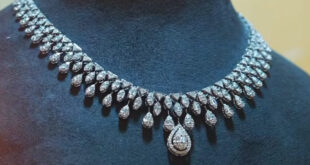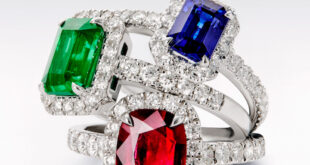In the world of precious stones or gemstones, opal holds a special place. Called a gem, it is not quite a gem, not only because of its multiple colours and flashes of fire it displays, but also because of its particular composition unlike any other gem mined… a true gift of nature!
A MULTI SPLENDOUR GIFT OF NATURE
To many people opal is the most exciting of all gemstones and is often considered the Queen of gems. According to its origin and variety, it is the only stone that has every other gemstone colour in it, the most spectacular ones being the black opals mined in Australia. Think of the lush and vivid greens of emerald, the bright and deep pigeon blood red of ruby, all the different shades of blue and the strong cornflower blue of Ceylon sapphire, sunny yellow, indigo and cyan, very rare in the colour spectrum, the black opal displays these most vivid colours all in one.
It may be common knowledge that most precious opals are mined in Australia. There are other deposits outside this huge and wide continent like, for example in Mexico and Brazil. Even on the African continent, more particularly in Ethiopia, opals are produced. Less important varieties are situated in Honduras, Indonesia, Poland, Slovakia and Nevada (USA).
Although these differ from the Australian ones and are recognizable in play of colour and shape, their composition makes them opals all the same, regardless the continent where they are found.
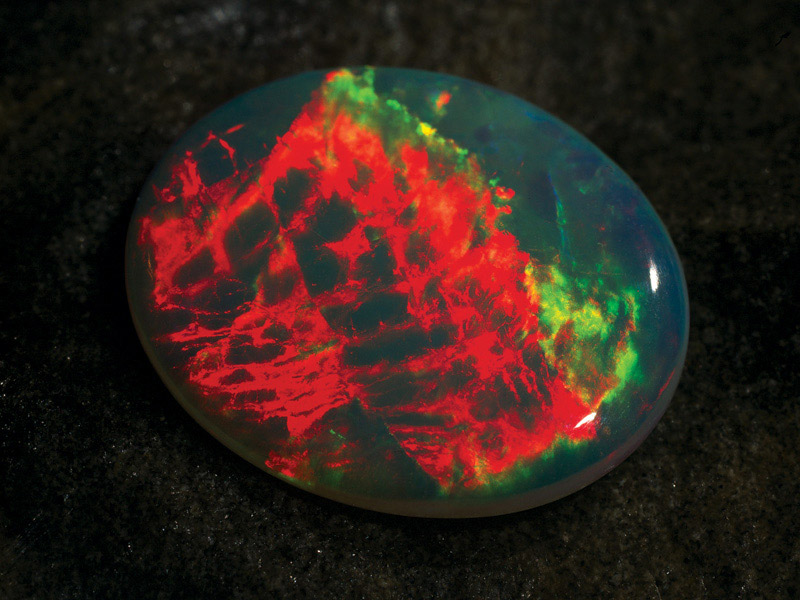
THE MYSTERY OF OPAL
So, why is it a gem but not quite a gem?
Opal is a non-crystalline gem formed in the ground when silica is liquefied and washed into fissures in the surrounding rock where it solidifies into a hardened gel. Tiny silica spheres create a pattern in opal that causes a prism-like effect that produces flashes of colour. This unique structure is the reason for the fabulous and somewhat magical play of colours never seen in any other gemstone.
A FASCINATING PLAY OF COLOUR
Of all opals, the ones that have a dazzling blaze of varying colours are often called ‘harlequin’, an effect that can be observed simply by looking at the same stone from different vantage points.
The most common on the market, white opal, has a transparent, translucent, or white body colour with vibrant pastel flashes of rainbow colour.
The stunningly beautiful black opal has a blue, gray or black body colour that reveals a more dramatic play of colour whereas boulder opal is most often black opal with a gleaming colour play and some of the ironstone matrix in which it occurred, still intact.
Transparent, colourless opal that contains brilliant flashes of colour swimming within it, is called crystal or water opal.
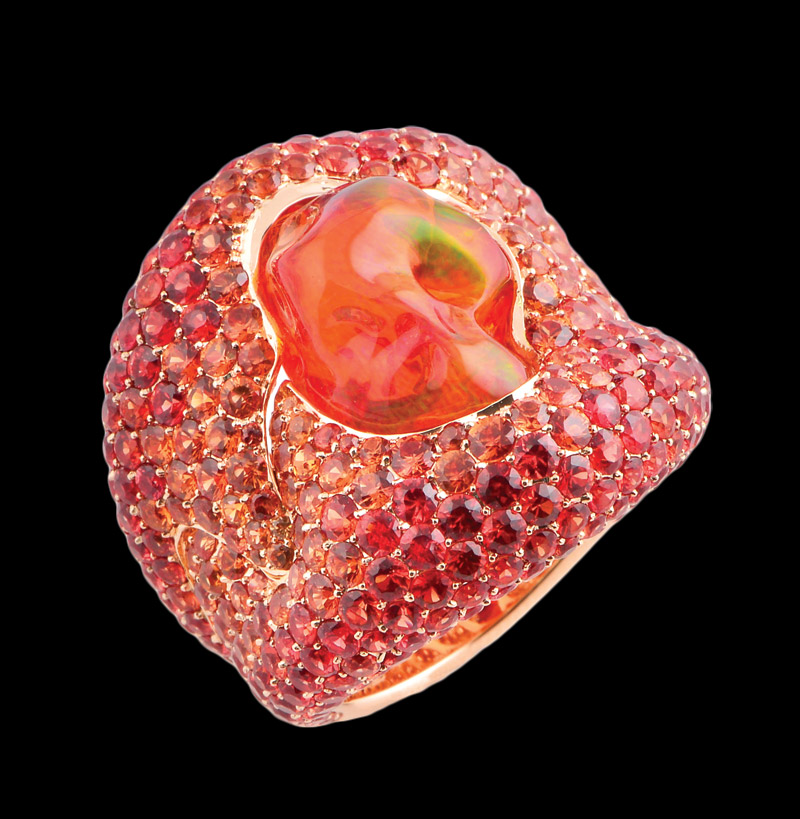
BRIGHT AND PURE TREASURES
Crystal opal gemstones in commercial quantities are found in Australia and in only one other place in the world: in Pedro Segundo, a little agricultural town in the north-east of Brazil, named after the great Emperor Dom Pedro II.
A crystal opal is pure and free of the hostrock in which it was created. It is the rarest and most sought after of all bright opals. Most stones found here are from alluvial or secondary deposits and therefore particularly resistant. “Because of the extremely low water-content of only 5,6% these crystal opals have almost no risk of crazing, no risk when put in an ultra-sonic bath or when having contact with oils, crèmes, acids” explains Jochen Knigge, a German opal dealer who spends a lot of his time at the site. He sees this as their most important characteristic. Although the Pedro Segundo opal production is the smallest of all known opal occurrences, some of the most extraordinary size stones were found. “Because of their size, these opals are really unique.” tells Knigge, “In 25 years I have not seen or heard of any stones of that size and quality. Don’t think that this is something you can order in a continuous way!” Such specimen, from 0,9 kg to 2,4 kg open doors to new opportunities for brand-new opal-products.
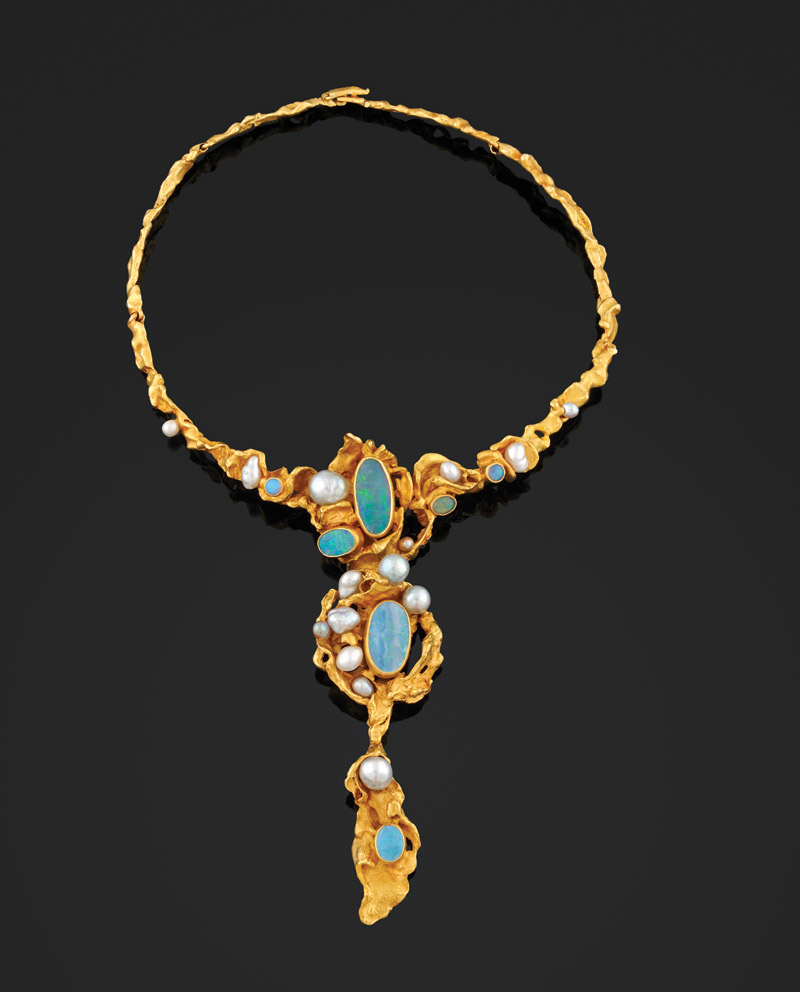
FLASHES OF FIRE
An unusual variety of opal gemstones is fire opal. The most significant deposits lie in Mexico. A wonderful fiery hue of yellow, orange and red that forms a uniform background colour throughout the stone is a characteristic of fire opal. The rarest, and thus more highly esteemed, is the intense red-orange variety with a strong play of colour.
“This season orange is trendy again leading to an increasing demand for fire opal” says Tanja Schütz, great-granddaughter of Emil Weis, founder of Emil Weis Opals KG company in Kirschweiler, Germany, a well-respected global player in the opal trade.
According to this passionate opal specialist, it has become hard to acquire new raw material due to the rising demand. Besides Australia, Emil Weis Opals KG has investments in mines in Mexico (Magdalena) as well, providing the company direct access to very fine, beautiful fire opals. However all opals collected at the sites of the finds, are cut in Kirschweiler.
Ranked 5-6.5 on the Mohs scale of hardness, opal is a little brittle and fragile. Therefore, great care must be taken in the cutting phase or when designing jewellery. Opal needs to be stored carefully to avoid being scratched by other jewellery. It should also be protected from blows, as exposed corners can chip. Opal should not be exposed to heat or acid.
Don’t let these considerations stop you from wearing opals ! These splendid, shining gems deserve meticulous attention. Their colourful beauty and mesmerizing power will enhance your life and give you joy for ever.
 Collection Pan Arab Luxury Magazine
Collection Pan Arab Luxury Magazine
